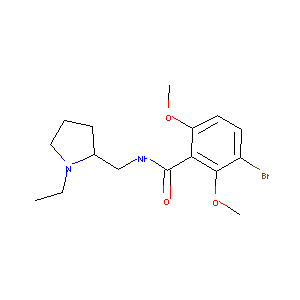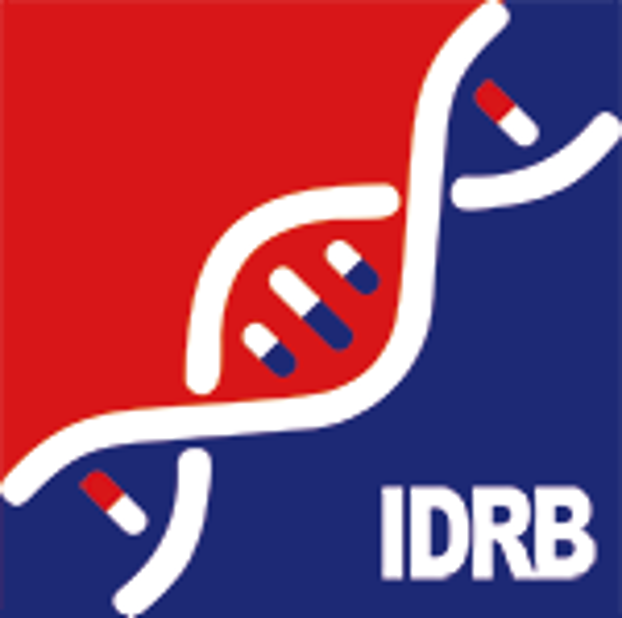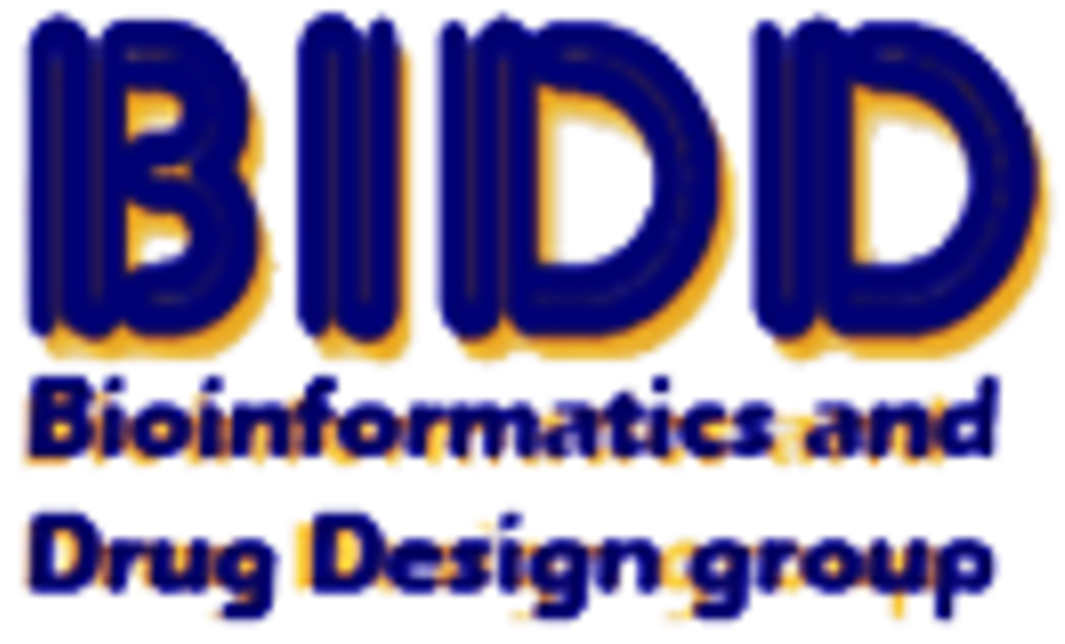Drug Information
| Drug General Information | |||||
|---|---|---|---|---|---|
| Drug ID |
D01PIL
|
||||
| Former ID |
DAP000312
|
||||
| Drug Name |
Remoxipride
|
||||
| Synonyms |
Remoxiprida; Remoxipridum; Romoxipride; A 33547; FLA 731; A-33547; FLA-731; Remoxiprida [INN-Spanish]; Remoxipride (USAN); Remoxipridum [INN-Latin]; Remoxipride [USAN:BAN:INN]; (-)-(S)-3-Brom-N-((1-ethyl-2-pyrrolidinyl)methyl)-2,6-dimethoxybenzamid; (-)-(S)-3-Bromo-N-((1-ethyl-2-pyrrolidinyl)methyl)-2,6-dimethoxybenzamide; (-)-n-ethyl-2-(3-bromo-2,6-dimethoxybenzamidomethyl)pyrrolidine; (S)-3-Bromo-2,6-dimethoxy-N-((1-ethyl-2-pyrrolidinyl)methyl)benzamide; (S)-3-Bromo-N-((1-ethyl-2-pyrrolidinyl)methyl)-2,6-dimethoxybenzamide; 3-bromo-N-[[(2S)-1-ethylpyrrolidin-2-yl]methyl]-2,6-dimethoxybenzamide
|
||||
| Drug Type |
Small molecular drug
|
||||
| Indication | Schizophrenia [ICD9: 295; ICD10:F20] | Withdrawn from market | [1] | ||
| Therapeutic Class |
Antipsychotic Agents
|
||||
| Structure |

|
Download2D MOL |
|||
| Formula |
C16H23BrN2O3
|
||||
| Canonical SMILES |
CCN1CCCC1CNC(=O)C2=C(C=CC(=C2OC)Br)OC
|
||||
| InChI |
1S/C16H23BrN2O3/c1-4-19-9-5-6-11(19)10-18-16(20)14-13(21-2)8-7-12(17)15(14)22-3/h7-8,11H,4-6,9-10H2,1-3H3,(H,18,20)/t11-/m0/s1
|
||||
| InChIKey |
GUJRSXAPGDDABA-NSHDSACASA-N
|
||||
| CAS Number |
CAS 80125-14-0
|
||||
| PubChem Compound ID | |||||
| PubChem Substance ID |
7980506, 8183659, 11112836, 11113786, 11466999, 11468119, 11486648, 12012970, 14755372, 17396851, 26751966, 34718458, 46508689, 47425546, 47425547, 47721872, 47945090, 47945091, 48095783, 49699324, 49875811, 50104640, 50409168, 57313624, 85788347, 85788802, 92308915, 99381443, 103189253, 103935779, 104304992, 117389433, 124886955, 126671568, 128007637, 134337624, 135014299, 137001507, 137263915, 144204485, 160963755, 163693566, 163853023, 170466425, 172860811, 176484143, 179151044, 198968595, 223541941, 223682010
|
||||
| SuperDrug ATC ID |
N05AL04
|
||||
| SuperDrug CAS ID |
cas=080125140
|
||||
| Target and Pathway | |||||
| Target(s) | D(2) dopamine receptor | Target Info | Antagonist | [2], [3] | |
| KEGG Pathway | Rap1 signaling pathway | ||||
| cAMP signaling pathway | |||||
| Neuroactive ligand-receptor interaction | |||||
| Gap junction | |||||
| Dopaminergic synapse | |||||
| Parkinson's disease | |||||
| Cocaine addiction | |||||
| Alcoholism | |||||
| PANTHER Pathway | Heterotrimeric G-protein signaling pathway-Gi alpha and Gs alpha mediated pathway | ||||
| Heterotrimeric G-protein signaling pathway-Gq alpha and Go alpha mediated pathway | |||||
| Dopamine receptor mediated signaling pathway | |||||
| Nicotine pharmacodynamics pathway | |||||
| Reactome | Dopamine receptors | ||||
| G alpha (i) signalling events | |||||
| WikiPathways | Hypothetical Network for Drug Addiction | ||||
| Monoamine GPCRs | |||||
| GPCRs, Class A Rhodopsin-like | |||||
| Genes and (Common) Pathways Underlying Drug Addiction | |||||
| GPCR ligand binding | |||||
| GPCR downstream signaling | |||||
| Nicotine Activity on Dopaminergic Neurons | |||||
| References | |||||
| REF 1 | Pharmacology of the atypical antipsychotic remoxipride, a dopamine D2 receptor antagonist. CNS Drug Rev. 2001 Fall;7(3):265-82. | ||||
| REF 2 | Atypical antipsychotics: mechanism of action. Can J Psychiatry. 2002 Feb;47(1):27-38. | ||||
| REF 3 | Remoxipride in Parkinson's disease: differential response in patients with dyskinesias fluctuations versus psychosis. Clin Neuropharmacol. 1995 Feb;18(1):39-45. | ||||
If You Find Any Error in Data or Bug in Web Service, Please Kindly Report It to Dr. Zhou and Dr. Zhang.

